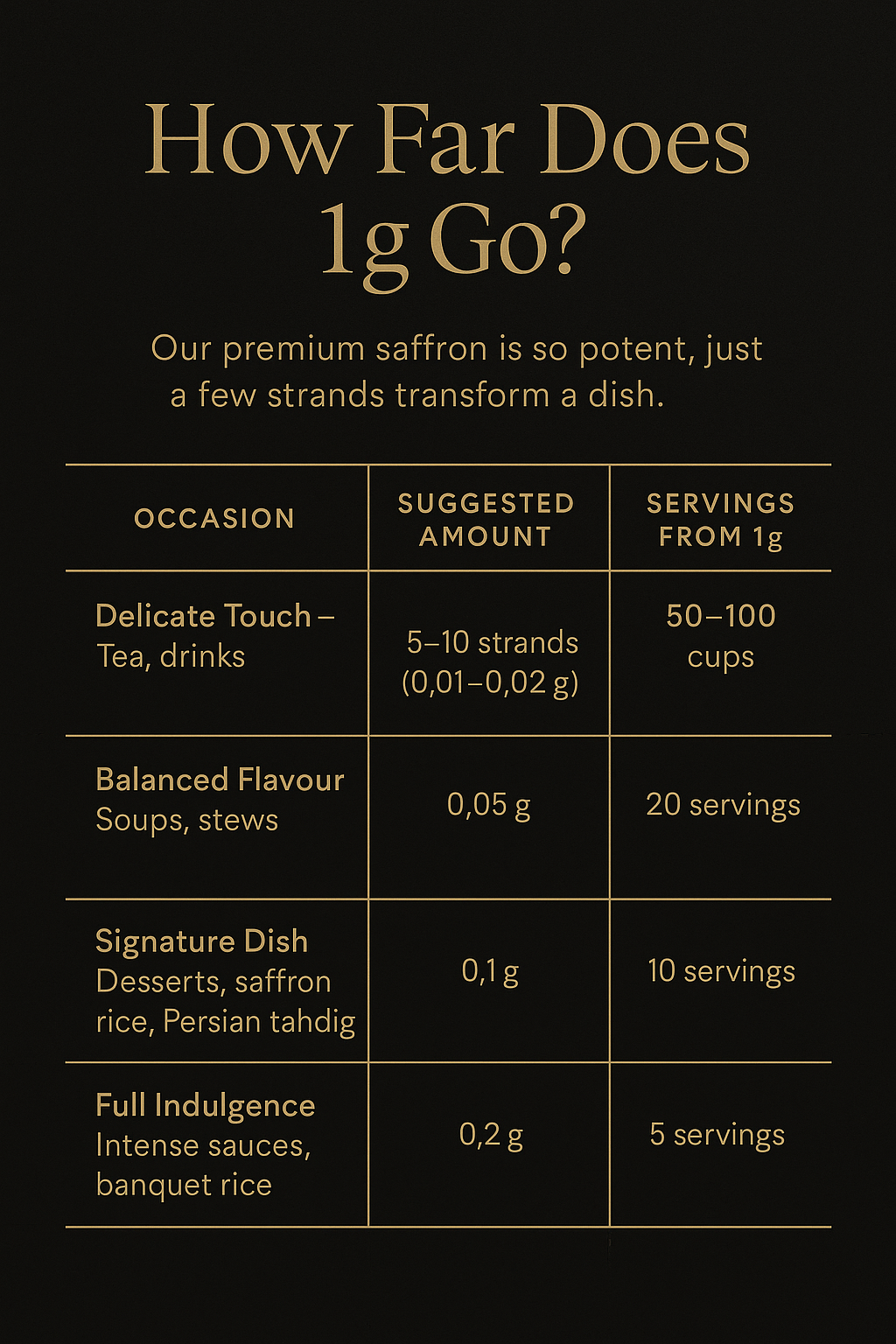Frequently asked questions
Saffron is a spice derived from the flower of Crocus sativus, commonly known as the "saffron crocus". The vivid crimson stigma and styles, called threads, are collected and dried for use mainly as a seasoning and colouring agent in food.
Are saffron threads edible?
Yes, you can eat saffron threads. However, it tastes, and smells better when applied in your favorite food and drinks, like saffron rice, saffron risotto, saffron milk, or saffron tea.
Which saffron is the best?
Iranian saffron (Super Negin Grade) is rated as the best saffron in the world.
Why is saffron expensive compared to other spices?
Saffron is only harvested in autumn from circus flowers. The entire process of harvesting and processing is by hand, and it is very labour intensive. On average, each flower produces three to five stigmas at a time. So if you are using roughly 25 stigmas to cook Saffron Risotto, or Spanish Seafood Paella, that is 8 different saffron circus flowers. This means it takes about 75,000 flowers to produce one pound or (half kilogram of saffron).
What does saffron taste like?
Although, saffron has its unique essence in flavor. Saffron tastes slightly sweet and has a floral and earthy taste. It has a herbal taste of unique sweetness and sour.
HOW FAR DOES 1G GO?
If you refer to the below, there is a helpful table on an estimate use of saffron strands for dishes, drinks and uses.




